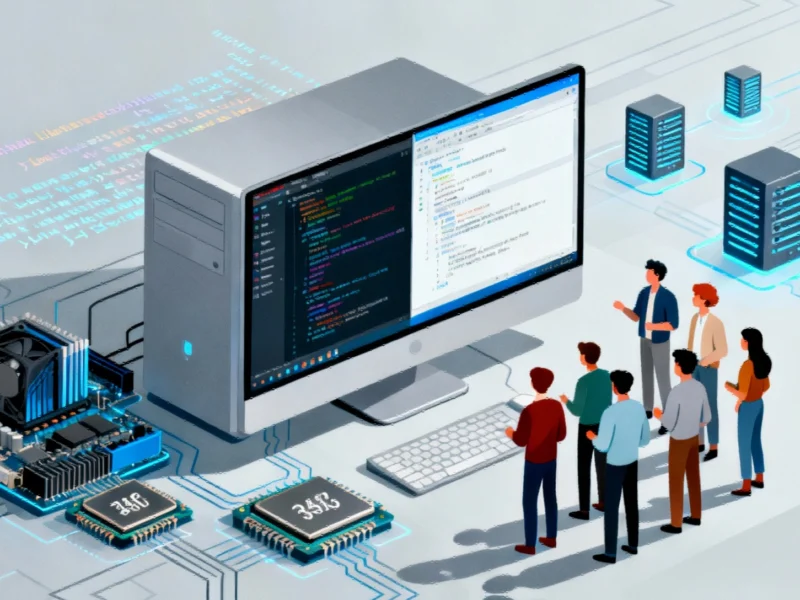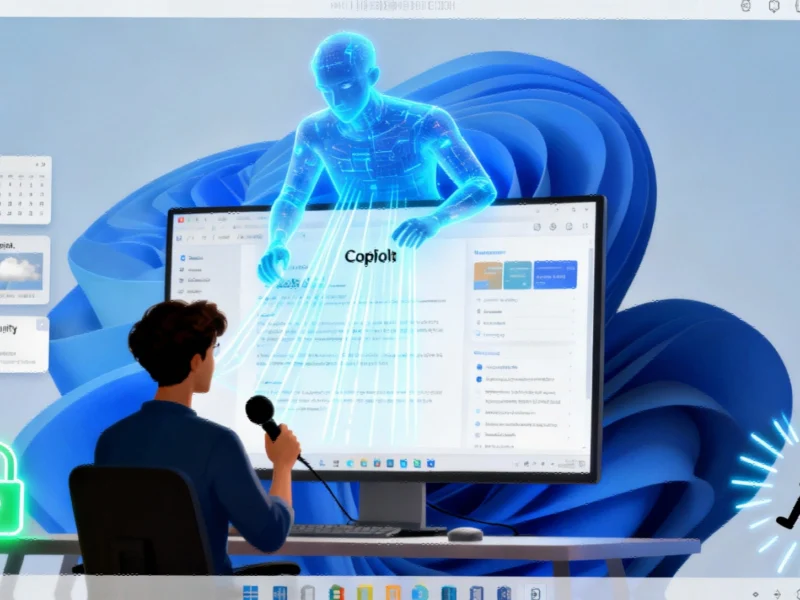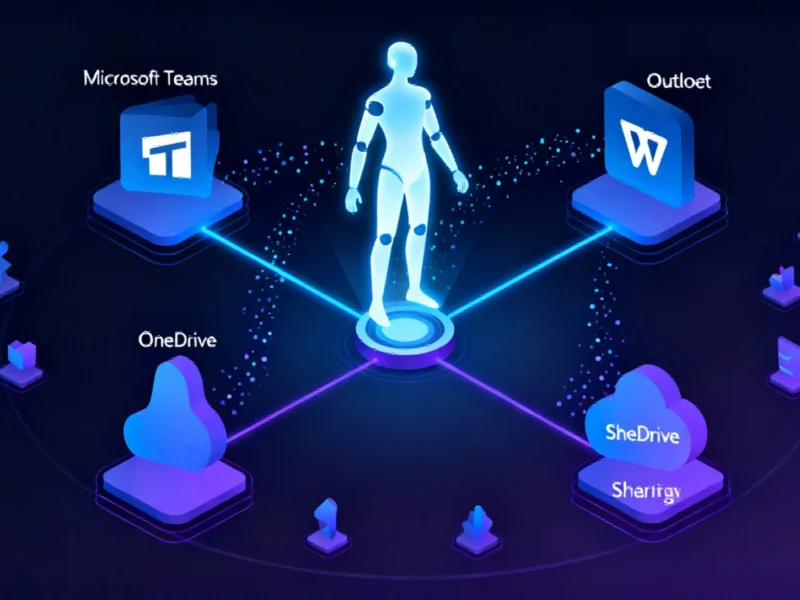Commodore’s Strategic Pivot to Linux-Based Computing
In a bold move that could reshape the industrial computing landscape, the revived Commodore brand is positioning its Linux-based Vision OS as a strategic alternative for enterprises and users facing Microsoft’s Windows 10 end-of-life scenario. As detailed in recent coverage of Commodore’s brand revival, this initiative represents more than nostalgia—it’s a calculated response to growing concerns about digital sovereignty and proprietary ecosystem dependencies in industrial computing environments.
The timing couldn’t be more critical. With Microsoft having terminated official Windows 10 support in October 2025, organizations worldwide are evaluating their migration strategies. While the operating system continues to function, the security implications for industrial systems are substantial, particularly as Windows 10’s final security update addressed 172 vulnerabilities that had accumulated during its lifecycle.
Vision OS: Architecture and Industrial Applications
Commodore OS Vision 3.0 represents a significant departure from conventional Linux distributions, despite its Debian foundation. The 35GB installation footprint reflects its comprehensive approach to industrial computing needs, bundling specialized software packages and development tools that cater to both legacy systems and modern industrial applications.
The platform’s architecture is particularly noteworthy for industrial environments where Windows 10’s final patch addressed a bewildering number of security issues that could impact operational technology networks. Vision OS incorporates privacy-by-design principles and eliminates what Commodore describes as “digital noise” and surveillance features common in mainstream operating systems—features that are increasingly critical in sensitive industrial settings.
Hardware Integration and Industrial Deployment
Beyond the software offering, Commodore’s strategy includes hardware integration through the Commodore 64X PC, which features modern x86 processors and contemporary industrial-grade components. This hardware-software bundling approach provides a turnkey solution for organizations seeking to migrate entire workstation fleets without compatibility concerns.
The company’s FPGA-based Commodore 64 Ultimate has already demonstrated market appetite, with 10,000 pre-orders signaling strong interest in Commodore’s approach to blending heritage with modern computing requirements. This success suggests potential for industrial adoption where specialized computing environments are required.
Technical Innovations and Development Environment
Vision OS distinguishes itself through several technical innovations relevant to industrial computing:
- Modern BASIC Implementation: The inclusion of an updated BASIC programming language provides accessibility for industrial automation scripting and rapid prototyping
- Game-Oriented Packages: Beyond entertainment, these packages include simulation and visualization tools applicable to industrial training and process modeling
- Privacy Architecture: Built-in protections against tracking and data collection address growing regulatory concerns in industrial data management
The platform’s development comes as AI breakthroughs are achieving 97% accuracy in hardware testing, suggesting potential integration points for Vision OS in next-generation industrial computing environments where AI and machine learning are becoming increasingly important.
Leadership and Strategic Direction
The revival of Commodore International Corporation under the stewardship of the Retro Recipes YouTube channel brings together original Commodore engineers including Albert Charpentier, Dave Haynie, and Bil Herd. This combination of historical expertise and contemporary community-driven development creates a unique position in the industrial computing market.
The leadership emphasizes that Vision OS and Commodore’s hardware initiatives represent a “full reset” rather than incremental upgrades, positioning the platform as a clean break from the accumulated technical debt and privacy concerns associated with established operating systems.
Market Position and Future Outlook
Commodore’s entry into the post-Windows 10 landscape comes at a pivotal moment for industrial computing. The platform’s focus on privacy, absence of “toxic social media” integrations, and resistance to what the company terms “Big Tech’s monopolistic practices” aligns with growing enterprise concerns about vendor lock-in and data sovereignty.
While the 35GB download size may present challenges for some deployment scenarios, the comprehensive software bundle could reduce post-installation configuration requirements in industrial environments where standardization and predictability are valued over minimal footprint.
As organizations worldwide navigate the post-Windows 10 transition, Commodore’s Vision OS represents one of the more distinctive alternatives emerging in the market—blending historical brand recognition with contemporary computing philosophy in ways that could resonate particularly well with specialized industrial computing requirements.
Based on reporting by {‘uri’: ‘techspot.com’, ‘dataType’: ‘news’, ‘title’: ‘TechSpot’, ‘description’: ‘Technology news, reviews, and analysis for power users, enthusiasts, IT professionals and PC gamers.’, ‘location’: {‘type’: ‘place’, ‘geoNamesId’: ‘4164138’, ‘label’: {‘eng’: ‘Miami’}, ‘population’: 399457, ‘lat’: 25.77427, ‘long’: -80.19366, ‘country’: {‘type’: ‘country’, ‘geoNamesId’: ‘6252001’, ‘label’: {‘eng’: ‘United States’}, ‘population’: 310232863, ‘lat’: 39.76, ‘long’: -98.5, ‘area’: 9629091, ‘continent’: ‘Noth America’}}, ‘locationValidated’: False, ‘ranking’: {‘importanceRank’: 190023, ‘alexaGlobalRank’: 3150, ‘alexaCountryRank’: 1441}}. This article aggregates information from publicly available sources. All trademarks and copyrights belong to their respective owners.



